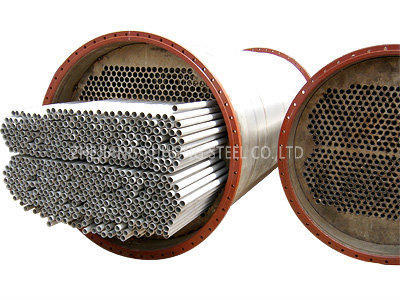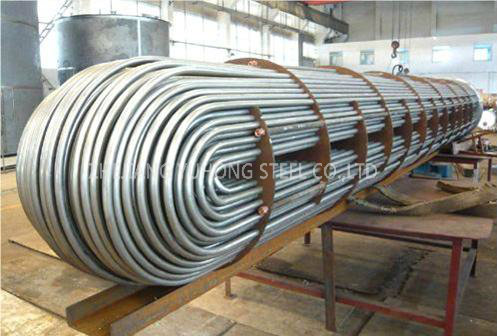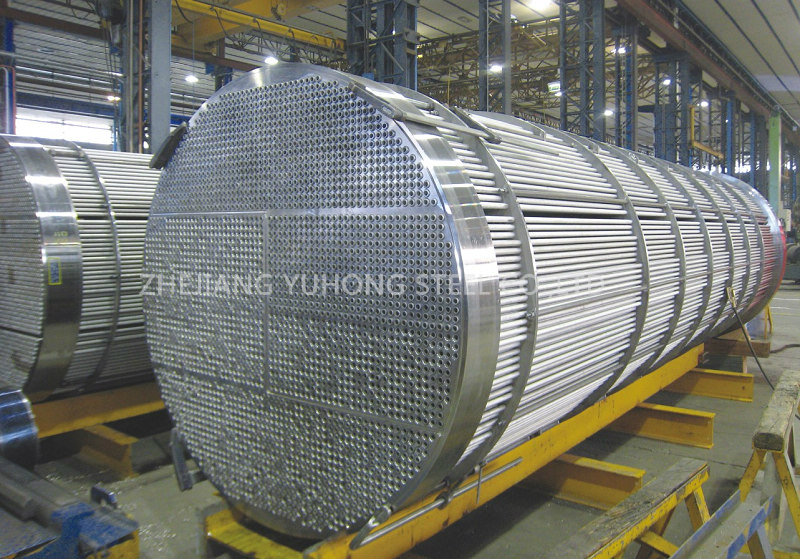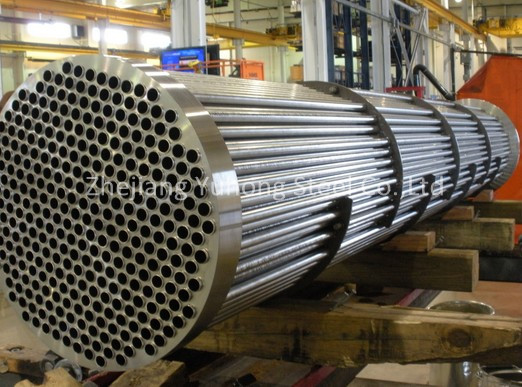The application of electro-hydraulic hammer in China began in the 1970s. In view of the emergence of foreign hydraulic hammers at the time, based on the simultaneous realization of energy saving and vibration reduction, some research institutes in China began the development of hydraulic hammers. In 1974, Shanxi Taiyuan Heavy Machinery College and our company (formerly Hai'an Forging Machine Tool Factory) jointly developed China's first 63KJ hydraulic counter hammer. In the same period, Jilin University of Technology also developed a 25KJ rough hammer and worked in oil-sucking mode. Hydraulic counter hammer. In the 1980s, research institutes represented by Beijing Institute of Technology began to transform traditional steamed forging hammers with electro-hydraulic transmission, and achieved obvious economic and social benefits. In the late 1980s, our company cooperated with Jinan Casting and Forging Co., Ltd. to develop the world's first anti-vibration hydraulic die forging hammer that can achieve vibration reduction and work in the oil strike mode. At present, it has accumulated nearly 50 production. station. In the 1990s, our company started the research of full hydraulic hammer and obtained the national patent in 1996.
The research on electro-hydraulic hammer in China started relatively late in foreign countries, but the development is extremely rapid and the categories are relatively complete. At present, there are more than ten units engaged in the research and production of electro-hydraulic hammers, and various types of electro-hydraulic hammers have appeared.
The existing electro-hydraulic hammers in China are liquid-liquid hammers from the perspective of driving media. They can be divided into two categories according to the principle of operation: one is to work in the way of oil injection, and the other is to work in oil-impact mode. .
The liquid air hammer working in the oil strike mode has a certain amount of compressed gas in the working chamber, and the hammer head realizes the return flow under the action of the compressed gas. When the rodless chamber enters a large amount of high pressure oil, the rod cavity gas is Compression, the hammer head realizes rapid descending movement under the action of self-weight and high-pressure oil. When the hammer is in the striking state, the working cylinder has no rod chamber to inject high-pressure oil, and the rest of the working conditions are in the unloading state, so the return speed is fast and the hydraulic oil leakage tendency is small. The liquid gas hammer power head of the transmission principle is applied to the vibration-damping striking system to form a vibration-absorbing hydraulic die forging hammer. Due to the balance effect of the flywheel on the hammerhead of the vibration-damping striking system, the return gas pressure is low, and the rod cavity gas seal is easy to obtain. Guaranteed and therefore highly reliable. If the liquid hammer power head is applied to the steam head of the steam hammer, the gas pressure of the rod chamber will be greatly increased, because the gas molecular density and molecular gravity are extremely low, the permeability is extremely strong, and the relative movement speed of the hammer rod pair is relatively high. And the frequency is high, the rod chamber gas sealing requirements are difficult to be guaranteed, and the leakage is easy to cause the hammer head to fail to return normally. In addition, the hammer is difficult to realize the suspension hammer movement, so few units use the power head of the transmission method for the stroke. The transformation of the long steamed air hammer, especially the steam head modification of the free forging hammer.
The liquid-gas hammer working in the oil-impacting mode has a certain amount of compressed gas filled in the rod-free chamber of the working cylinder. When the hydraulic oil enters the rod cavity, the rod-free gas is compressed, and the hammer is forced to rise; when there is a rod cavity and When the oil return port is connected to the oil discharge, the compressed gas in the rodless chamber expands, and the hammer head realizes a rapid descending movement under the action of its own weight and inflation gas. The liquid-air hammer working in this way, since the return signal must be emitted after the strike is completed, there is a phenomenon of long smoldering time, rebounding and the like, and at the same time, due to the action of the rod-free compressed gas, the return resistance is increased. The return speed is not fast, and the striking frequency is not high. Therefore, the liquid gas hammer working in this way is generally suitable for the steam-free free forging hammer head change, and is less suitable for the steaming die forging hammer change head.
The domestic hydraulic hammer can be divided into three categories from the structure of the striking system: one is the fuselage of the fuselage, the other is the relatively static vibration-damping hammer of the fuselage, and the other is the anvil.
The fuselage is slightly moving against the hammer type liquid hammer. The hammer head moves in the middle of the inner guide rail of the hammer body. The hammer head is in proportion to the mass of the fuselage. When striking, the fuselage and the hammerhead move in opposite directions and the momentum is equal. The amount is small. With this structure, the impact on the foundation is greatly reduced without the need for a large anvil. For example, the 63KJ counter hammer jointly developed by our company in the early 1970s with Taiyuan Heavy Machinery College, and the hydraulic hammer jointly developed by Jilin Gongda and Jilin Forging Equipment Factory belong to this category.
The relatively static vibration-damping hammer of the fuselage refers to the impact of the strike on the foundation when the fuselage is relatively static. The structure is a unique patent structure in China. The hammer body is provided with four eccentric flywheels, which pass the connecting rod and the hammer. The head is connected, and the connecting rod drives the eccentric flywheel to rotate when the hammer head moves downward. When the hammer is hit, the eccentric flywheel suddenly stops moving under the action of the connecting rod and generates an upward inertial force, and the eccentric flywheel fulcrum and the fuselage are used to strike. The purpose of balancing the force inside the fuselage. For example, the anti-vibration hydraulic die forging hammer jointly developed by our company in the late 1980s with Jinan Casting and Forging.
There are anvil hammers, such as the electro-hydraulic hammer developed by Beijing Institute of Technology and Xizhong, which are formed by changing the head and anvil of the original steaming hammer. After changing the head, the energy consumption is greatly reduced, and the energy utilization rate is increased by more than 10 times. . Practice has proved that the head change technology is a more economical and practical technology for energy conservation.
2 Development history and current status of foreign electro-hydraulic hammer
The development of foreign electro-hydraulic hammer started in the 1930s, and it was earlier than 40 years in China. With the history of hydraulic hammer development of the world famous forging hammer manufacturer Lasco, the hydraulic hammer experienced a single move from the oil discharge. Hammer to the oil-sucking double-action drop hammer (that is, similar to China's current oil-sucking method liquid-gas hammer) and then to the current full-hydraulic double-action drop hammer development process. In the hammering characteristics, there are two series of 10-160KJ anvil hammers and 63-400KJ anvil-free hammers. At present, the company's full hydraulic hammer not only has a simple and reliable structure, but also has a very thorough operation monitoring system, fault diagnosis system, energy automatic control system and program control system. It has become the world's most famous intelligent electro-hydraulic hammer. Outstanding representative, currently providing full hydraulic hammer and Germany's Beche, Eumuco.
From this point of view, the development of China's hydraulic hammer is relatively foreign. From the driving principle, it is only at the level of Lasco's second-generation product development. It belongs to liquid-gas hammer, and the production research of full-hydraulic hammer is still in its infancy.
3 Technical characteristics and high reliability analysis of full hydraulic hammer
3.1 Full hydraulic drive power head
3.1.1 Working principle The so-called full hydraulic hammer, that is, the working cylinder has a rod cavity always passing a constant pressure oil. When there is no rod cavity into the pressure oil, the rod cavity and the rodless cavity are simultaneously connected to realize the differential, and the hammer head is in its own weight. And the rapid decline under the action of oil pressure, to achieve a blow. After the strike, the rodless chamber and the return port are connected to the pressure loss and the passage with the rod chamber is cut off, and the hammer head is quickly returned under the action of the rod chamber pressure oil.
The full hydraulic hammer adopting this principle not only overcomes the shortcoming of the oil-injection method, but also the shortcoming of the compressed gas of the rod chamber, which affects the failure of the hammer head to return and the return speed, and the position is difficult to control, and overcomes the oil discharge method. The liquid gas hammer has the disadvantages of long mold time, rebound combo, slow return speed and low strike frequency.
3.1.2 Structural characteristics of the power head The rapid development of the hydraulic hammer is beneficial to its huge energy-saving effect. The full hydraulic hammer is no exception. In addition to the advantages of the hydraulic hammer with the hydraulic hammer, the structure is not in the transmission principle. The upper control performance also has considerable advantages.
The high reliability of the full hydraulic hammer depends on its unique transmission structure, mainly in:
It adopts cone valve control. The cone valve control has the characteristics of fast response, large flow, simple and compact structure, shortest oil passage, minimum flow and pressure loss. The full hydraulic hammer relies on this advanced technology to be efficient, energy-saving and fast.
A composite cylinder structure is used. The strike speed of the full hydraulic hammer is basically the same as that of the steam hammer. Therefore, the oil discharge speed of the rod chamber is extremely high when hitting. Although the liquid gas hammer of the conventional oil discharge method adopts the patented technology of the quick release oil valve, the oil discharge resistance is still relatively large, which is also the speed of the blow, the return stroke. One of the slower factors. The full hydraulic hammer adopts the composite cylinder structure. When the striking, the rod cavity and the rodless cavity are instantaneously connected, and the rod cavity pressure oil quickly enters the rodless cavity through the internal passage of the composite cylinder, achieving no tube, no valve, and no resistance along the line. Oil; when returning, the pressure oil passes through the composite cylinder channel into the rod cavity, achieving less loss of oil in the path. The use of a composite cylinder structure provides a quick blow to the hydraulic hammer, creating an unparalleled prerequisite for a fast return.
Use fewer standard universal hydraulic pilot valves. Compared with the liquid-air hammer, the full-hydraulic hammer absorbs the advantages of the oil-impacting method. It can realize the basic actions of oil filling, oil draining, adjustment and striking by using three standard universal hydraulic valves. It is extremely convenient for maintenance, maintenance and replacement. Fast, low-cost.
The high and low pressure double anti-leakage structure is adopted. The most difficult solution to the constant pressure of the rod cavity is its sealing problem. It is well known that the higher the pressure, the higher the sealing requirements and the lower the pressure, the easier the seal is guaranteed. The full hydraulic hammer has a rod cavity and a accumulator that is always open. Although a small amount of leakage will not affect its normal return stroke, due to the specific working environment of the hammer, the hydraulic oil must be prevented from leaking. Therefore, the full hydraulic hammer adopts high and low pressure double prevention. The leakage sealing structure allows a small amount of leakage of the high-pressure oil that cannot be absolutely sealed to flow back to the oil tank through the oil drain passage, and the low-pressure seal only ensures that the hydraulic oil of the oil drain passage is not leaked. Double sealing measures ensure a safe and reliable seal.
3.2 Strike system
The full hydraulic short stroke die forging hammer striking system adopts an integral U-shaped cast steel frame, which can easily replace the wide guide rail structure, and facilitate the fixing and adjusting structure of the mold. It guarantees the high precision requirements of forgings.
Because the structure of the striking system is very simple, its failure rate is almost zero, which is undoubtedly a qualitative leap compared to the anti-vibration hydraulic die forging hammer and the hammer.
3.3 Control system
3.3.1 More thorough operation and monitoring The reliability of the full hydraulic hammer can be guaranteed. In addition to the simplest structure required, a good internal operating environment must be created. The full hydraulic hammer monitors the cleanliness, temperature, pressure, liquid level, etc. of the hydraulic oil through the sensor. Once there is a phenomenon that does not meet the operating conditions of the system, it automatically alarms, and can realize self-protection, stop the hammer or even stop. At the same time, as much as possible, the auxiliary facilities that may be involved in safety are also monitored as much as possible. If the requirements are not met, the startup of the host cannot be realized.
3.3.2 The control of the striking energy and the realization of the program-controlled strike The vibration and noise caused by the forging hammer's surplus energy are two major shortcomings, but once the striking energy is controlled, the situation will be greatly improved. The full hydraulic die forging hammer adopts a programmable automatic control system, so that the impact energy per hammer and the number of strikes per workpiece can be controlled as needed, so that the vibration of the striking system is greatly improved, the striking noise is greatly reduced, and the noise is reduced. For the technical requirements of the operator, the precision of the forging is also relatively stable, and the reliability of the operation of the equipment and the life of the mold are improved.
3.3.3 Fault display for easy maintenance In order to facilitate the user to do better maintenance and maintenance work, the hydraulic hammer has a common fault display window. Once an abnormality occurs, the fault can be quickly found through the fault display window. The reason for this can be quickly processed and shortened repair time.
3.4 Vibration reduction system
In order to overcome the shortcomings of the anvil hammer vibration, the full hydraulic hammer adopts the 90-year-old hydraulic damping isolator produced by German GERB Company, which not only isolates the vibration influence on the surrounding machine tools, buildings and residents, but also reduces the vibration. The impact on equipment reliability and service life due to hammering.
4 The necessity and development direction of the development of hydraulic hammer in China
4.1 From the current situation of the forging industry, the energy-saving transformation of the head is the most economical and effective.
According to incomplete statistics, China has nearly 2,500 steam hammers. At present, 300 have been transformed, and 2,200 units need to be rebuilt. The energy-saving effect of electro-hydraulic hammer has been proved by more than 90%, and the technology of reforming steam-air hammer with electro-hydraulic hammer power head has become mature. The forging industry has become an effective way to step out the high energy consumption and low efficiency dilemma by transforming the energy saving and consumption reduction of the steaming hammer. Therefore, the active development of steam-air hammer energy-saving transformation, benefiting the country and the people, has great potential for development.
4.2 From the perspective of hydraulic hammer control performance, hydraulic hammers with different principles should give full play to their respective strengths.
Free forging hammer is more random due to the forging process requirements, energy conversion is more frequent between different steps, and the requirement for fast return without delay is lower, the frequency of strike is lower than that of die forging hammer, and the liquid for manual control is used for oil discharge. The air hammer has certain advantages because it is easy to control because of the return position. Since there is no mold, the rigidity of the frame is not high. Therefore, in general, the steam heading free forging hammer is preferably replaced by a power head changing method. For example, the transformation of the heads represented by the Northern Institute of Technology and the West Heavy Industry has proved that it can meet the production needs.
Die forging hammer, because the product is relatively stable, the energy conversion between different steps shows a certain law, easy to achieve program control, because the mold temperature directly affects the life of the forging die and the temperature of the forging directly affects the cavity can be filled and other factors, so the forging hammer There is no requirement for fast delay without delay and fast combo for short time. Due to the need for eccentric forging of the mold centering and multi-mode boring, the rigidity requirement of the frame is relatively high. Therefore, the liquid-gas hammer using the oil-impacting and easy to implement the program control mode has certain advantages. For example, the hydraulic power head developed by our company in the late 1990s uses a programmable controller to realize the program control of the impact energy and the number of strikes, which not only reduces the technical requirements of the workers, but also stabilizes the quality of the forgings and improves the mold. The life expectancy reduces the impact of noise, avoids the impact of surplus energy, and reduces the impact of the machine on the foundation.
The full hydraulic hammer has the advantages of two liquid-air hammers. It can control the energy of the hammer return position manually, meet the needs of the free forging process, and can be controlled by the program to control the length of the oil to achieve precise control of energy. Meet the needs of the die forging process.
4.3 From the perspective of structural performance of hydraulic hammers, hydraulic hammers of different structures have different adaptability.
The hydraulic counter hammer not only solves the problem of high energy consumption, but also achieves the purpose of vibration reduction, but also increases the complexity of the striking system and hydraulic system. Due to the harsh working environment of the forging hammer and the working state of strong impact, the failure rate is relatively high compared with other forging equipment, the more complicated the system and the high failure rate. The anvil hammer has certain advantages due to its relatively simple structure and relatively high reliability. However, if the large-tonnage forging hammer adopts an anvil hammer structure, not only the structure of the fuselage is large, but also the impact resistance of the foundation is high, and thus the hammer has certain advantages. Referring to the structural classification of foreign hydraulic hammers, under normal circumstances, it is suitable to use an anvil hammer structure below 160KJ, and it is suitable to use the hammer structure above 100KJ, which is more economical and has better performance and price ratio.
4.4 From the development trend of the forging industry, the short-stroke full hydraulic die forging hammer with high efficiency, high precision and low energy consumption has a good development prospect.
With the rapid development of China's automobile, motorcycle and aerospace industries, and the acceleration of China's accession to the WTO, the economic structure of market internationalization and procurement globalization has become an inevitable trend. The production methods of the forging industry are becoming more specialized, large-scale, and commercialized. With the transformation, the demand for forgings will gradually develop towards lighter, more precise and low-cost. In order to meet this requirement, forging equipment must develop in the direction of high efficiency, high precision, high reliability and low energy consumption.
China's forging industry has scattered factory sites and backward technological level. Conditional forging plants can achieve energy saving and consumption reduction by changing heads. However, improving the precision of forgings can only be ensured by improving the precision of the molds, or using hot forging pressures with better rigidity. The machine meets the requirements of high precision. The production capacity of ordinary die forgings is very rich. The horizontal production capacity of precision forgings which can reach the German DIN7526E standard is obviously insufficient, which is very different from foreign countries.
Therefore, the development of a new short-stroke full-liquid forging hammer with high efficiency, high precision, high reliability and energy-saving features is very necessary.
5 Conclusion
"Who will arm our forging industry?" This is a question worthy of our "forging people". Of course, boldly adopting foreign advanced equipment and introducing advanced foreign technology is an effective way to quickly reach the international advanced level. But blindly relying on the introduction, relying on several times or even more than ten times the price of equipment in China, repeated introduction is not worthy of admiration. In fact, as far as the author is concerned, there are two forging lines centered on forging hammers introduced by two companies. The technical level is first-class, and the technological means are indeed advanced, but the difference between input and actual output benefits is too large. According to the current actual output benefits, it takes 50 years to recover the investment. Of course, if we introduce and digest and absorb, form our own things, and then promote them, we will surely produce huge social benefits. This should be the real purpose of our introduction.
Heat exchanger Tube
Heat exchanger Tube are used in all types of process industries. We offer the market`s widest selection of stainless steel grades and has extensive experience of manufacturing heat exchanger tubes.
Description: Heat-exchanger equipment, pipelines and pipeline components
OD: 15.88, 19.05, 25.4, 31.75, 38.1mm etc;
WT: 1.24, 1.65, 2.11, 2.77, 3.05mm etc;
Main Testing Terms Accoring to ASTM A213 and ASTM A1016, EN 10216-5
1. High pressure hydraulic Test / Hydrostatic testing; 2. Eddy current test, Ultrasonic Test; 3. Mechanical Test, Physical properties test; 4. OD , WT, Length tolerance Test.; 5. PMI Test
Tubes End: The tubes are supplied plain, square cut and on request, the tubes will be deburred.
Application:
Nuclear Industry; Chemical Industry; Petrochemical industry; HVAC (Heating Ventilation Air Conditioning), refrigeration; Food and Beverages; Power Generation




Heat Exchange Tube,Incoloy Heat Exchanger Tube,Inconel Heat Exchanger Tube
YUHONG GROUP CO.,LIMITED , http://www.alloypipeline.com